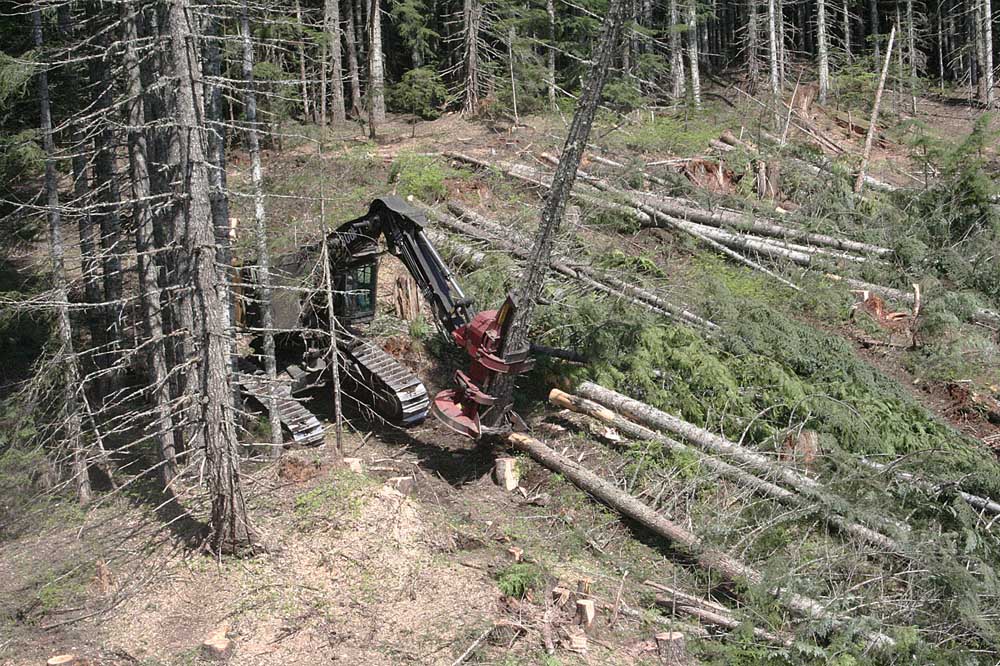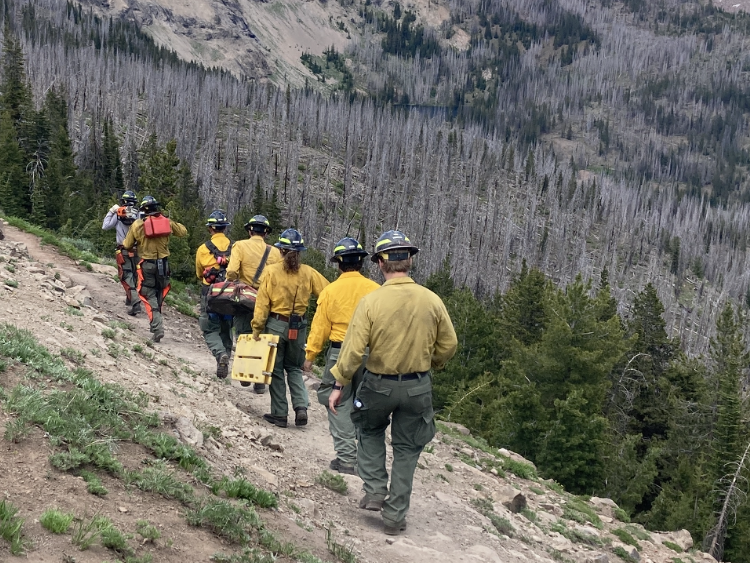Oregon to proceed with ‘habitat conservation plan’ process
Published 10:54 am Wednesday, October 7, 2020

- Trees are logged in an Oregon forest with a feller-buncher. Oregon’s Board of Forestry has voted to proceed with a habitat conservation plan analysis opposed by the timber industry.
Oregon forest regulators have unanimously rejected the timber industry’s arguments against moving forward with a “habitat conservation plan” for several protected species on state forestlands.
On Oct. 6, the Oregon Board of Forestry voted in favor of proceeding with an environmental analysis of the plan, which timber advocates wanted to prevent due to fears of reduced logging and harm to rural economies.
The habitat conservation plan, or HCP, would aim to mitigate harm to 16 species that are listed under the Endangered Species Act or could gain federal protection.
However, the plan would absolve the Oregon Department of Forestry, which manages the forestlands, from liability for “incidental take” — the killing of protected species or destruction of their habitat.
Currently, ODF manages the affected 640,000 acres to avoid incidental take, which the HCP anticipates will be tougher to do in the future.
Representatives of the timber industry and rural communities argue the plan is too restrictive compared to similar HCPs on private and public property elsewhere in the Northwest.
“Do I care about endangered species? Yes, but there is already so much ground set aside for that now,” said Mike Pihl, a logger from Vernonia and president of the Timber Unity group, which advocates on behalf of rural communities.
Much of Oregon’s forestland is under federal ownership and effectively cannot be logged, while the state also has extensive regulations for harvesting timber on state and private lands, he said.
“We already have tons of protection in place,” Pihl said.
The plan ignores the economic and social needs of rural communities while taking a hands-off approach to management that has led to fire danger and other problems on federal property, said Rex Storm, lobbyist for the Association of Oregon Loggers.
“This HCP would repeat the failures of federal forest management, which are unacceptable to us,” Storm said.
Under the ODF’s interpretation, logging would initially decline under the HCP but the plan would eventually result in a larger volume of timber harvest over 75 years compared to the current “take avoidance strategies.”
The agency claims the HCP will provide “increased certainty” compared to other forest management methods, which will also likely result in reduced logging as more species are listed and more acreage must be protected.
The Oregon Forest & Industries Council, which represents the timber industry, counters that the HCP sets aside too much forestland for conservation without taking into account the adverse impacts to the threatened spotted owl from the more aggressive barred owl.
The organization also worries that ODF’s data models and logging projections are flawed, which will result in greater-than-anticipated restrictions on timber harvest when the HCP is implemented.
“We have a lack of confidence in the harvest numbers,” said Seth Barnes, OFIC’s forest policy director.
Representatives of state and federal agencies, which have been developing the HCP since 2017, testified in support of conducting a federally required environmental analysis under the National Environmental Policy Act.
Only after that NEPA evaluation is complete in mid-2022 will the Board of Forestry decide whether to implement the plan.
The HCP will reconcile competing demands for wildlife habitat, clean water, timber revenues and other public values, said Paul Henson, the U.S. Fish and Wildlife Service’s state supervisor for Oregon.
The plan “does the most benefit for the greatest group of folks,” he said.
Members of the Board of Forestry ultimately agreed with proponents of the HCP, voting 6-0 to proceed with the NEPA analysis at the conclusion of the Oct. 6 online hearing.
The environmental analysis will provide more information about the HCP and answer questions about societal impacts and other effects, said Cindy Deacon Williams, a fisheries biologist and board member.
Even so, the ODF’s evaluation of the plan has already been robust up to this point, she said. “I’ve never entered a NEPA process with this much done.”
James Kelly, a hardware entrepreneur and Grant County rancher, said he understands that timber communities are frustrated and distrustful of the plan, but the board doesn’t want to mismanage the state’s forests.
“Our job is to represent all the people of Oregon and I feel we take that quite seriously,” Kelly said.
Nils Christoffersen, executive director of the Wallowa Resources nonprofit, said that state forests are important for several types of jobs and reviving traditionally timber-dependent communities will require innovation.
“The harvest of trees is not going to solve the rural future,” he said.









